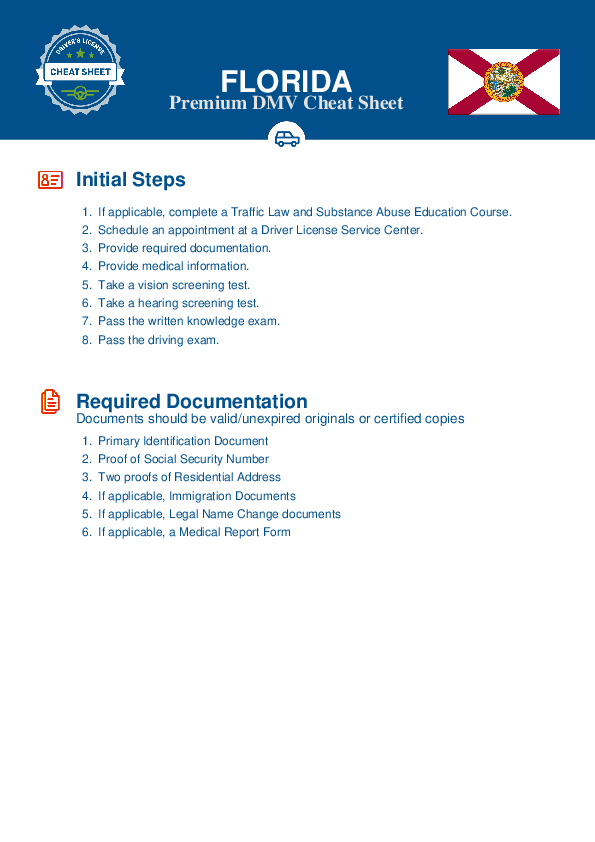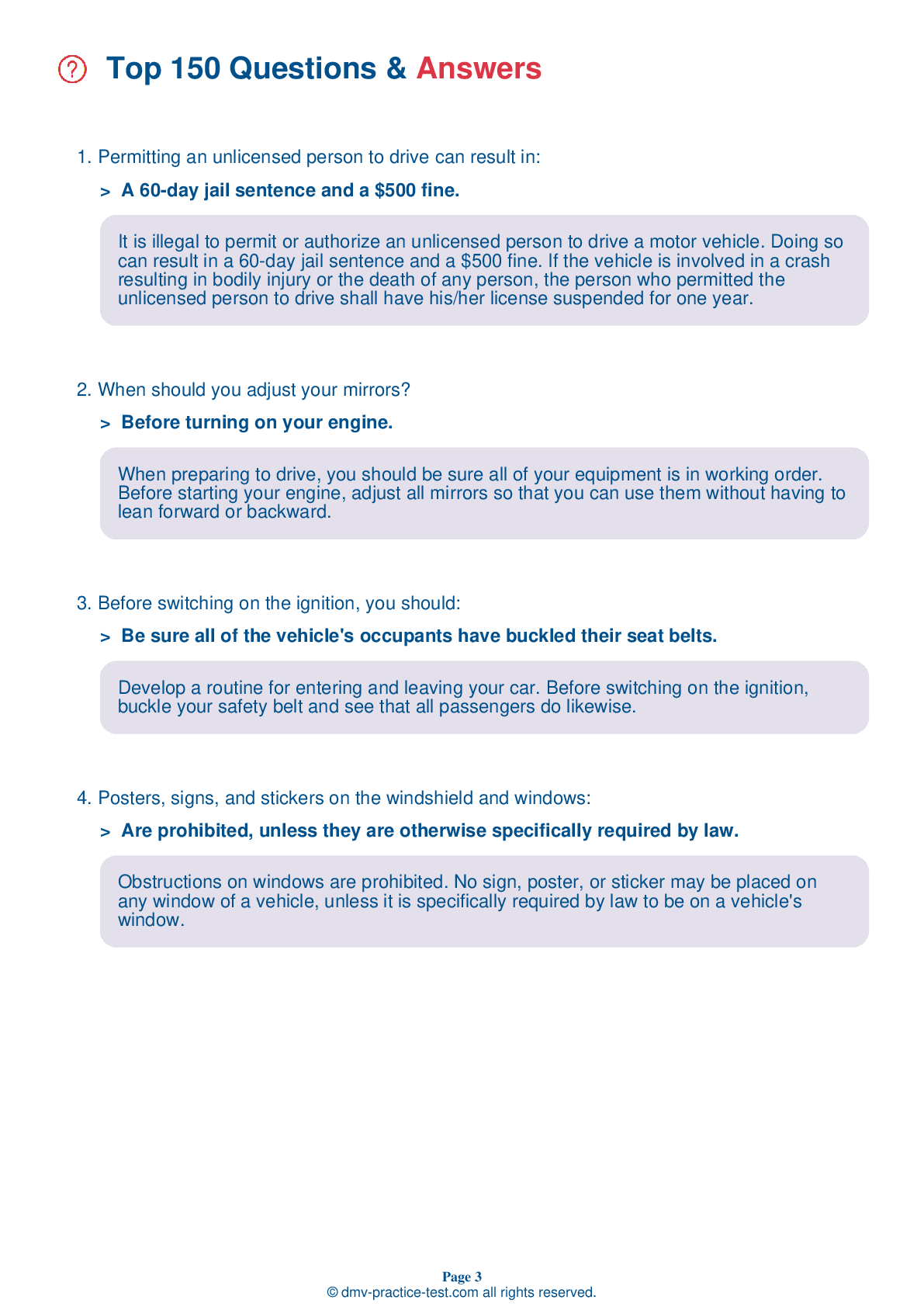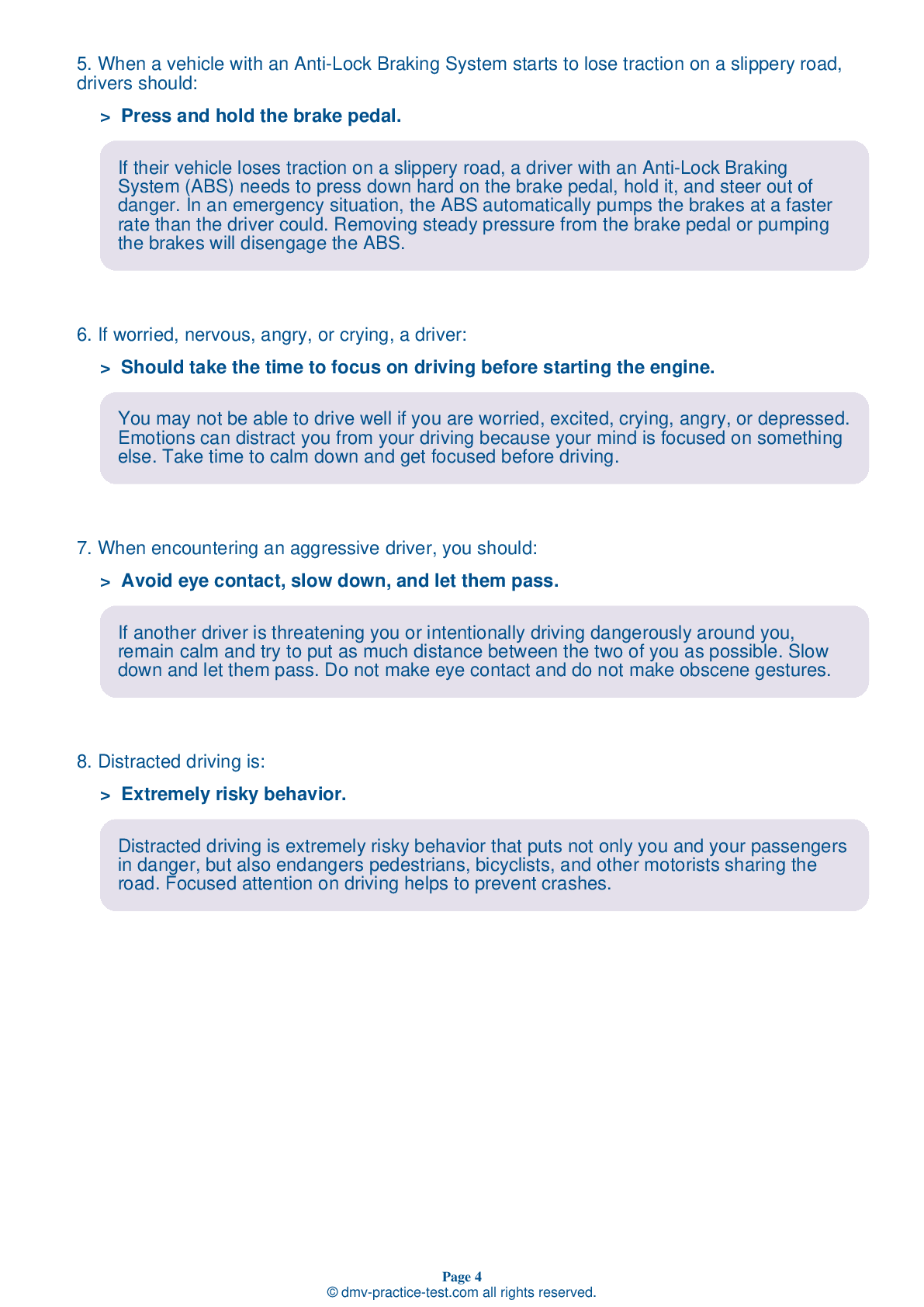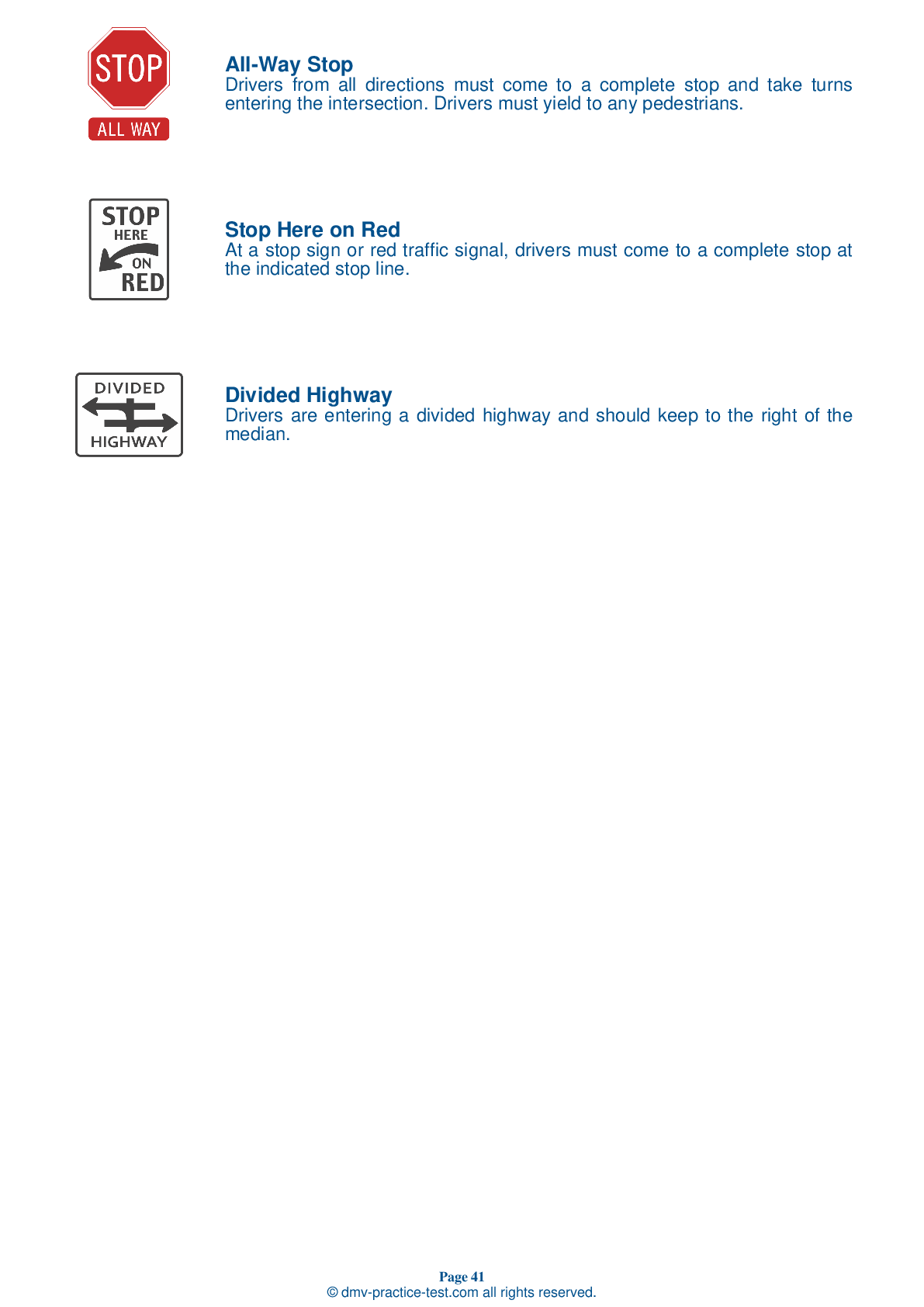FREE Florida DMV Practice Test #14 Page 4 of 7
This set of DMV practise tests for the Florida has been updated for January 2025. It includes questions based on the most important traffic signs and laws for 2025 from the Florida Driver Handbook. To study for the DMV driving permit test and driver's licence exam, use actual questions that are very similar (often identical!) to the DMV driving permit test and driver's licence exam.
Each question on the practise exam has a tip and explanation to help you recall the ideas. Questions about traffic rules, traffic signs, and driving statutes, as well as information from the Driver Handbook, will be included in the written portion of the official DMV test.
You must properly answer 40 of the 50 questions to receive the required passing mark. To help you prepare for your Florida instruction permit or driver's licence, take our DMV practise test.
The DMV exam is offered in a variety of languages.
Using any kind of testing assistance will result in an automatic fail, and the DMV may take additional action against your driver's licence, so stay away from it.
22 . You approach an emergency vehicle that is stopped with its lights flashing. You must:
If you approach an emergency vehicle, tow truck, or roadside assistance vehicle that is stopped with its lights flashing, you must change lanes to allow the vehicle extra space. If there is only one lane moving in your direction, or if changing lanes would be unsafe, you must slow down to a speed below the posted speed limit and give the stationary vehicle as much room as possible. Always slow down and be prepared to stop when you approach an emergency scene.
23 . When approaching a traffic signal displaying a flashing yellow arrow, drivers:
A flashing yellow arrow indicates that left turns are allowed in the direction of the arrow. However, the oncoming traffic has a green light and you must yield to oncoming traffic and pedestrians.
24 . What is the first thing you should adjust, if needed, when you get into a car to drive?
When preparing to drive, you should first adjust your seat to ensure that you are in a comfortable position and can see the road clearly. Adjust your mirrors and steering wheel to be effective when your seat is fully adjusted.
25 . To reduce the effects of headlight glare at night, you should look:
If oncoming drivers do not dim their headlights for you, keep your eyes on the right side of the road ahead. Do not look directly at the oncoming headlights because the glare may blind you for several seconds.
26 . If you are required to have increased insurance coverage limits but are unable to provide proof of the increased limits, you will:
Higher insurance coverage limits will be required for a driver who has been convicted of a DUI, accumulated an excessive number of points against their license, or committed a number of other possible infractions. If the driver is not able to provide proof of the higher limits, their license and/or plates may be suspended for up to three years.
27 . What are the colors of warning signs indicating upcoming hazards?
Warning signs that indicate approaching hazards are usually yellow with black lettering or symbols. Warning signs in work zones are orange with black lettering or symbols.
28 . Alcohol causes:
Consuming even a small amount of alcohol will impair your vision, judgment, concentration, and coordination.
See the exact questions that will be on the 2025 Florida DMV exam.
99.2% of people who use the cheat sheet pass the FIRST TIME
LT gives us an insight on how the cheat sheet provided her with all the study questions she needed before taking her test.
Joe initially studied with the handbook and failed his test, he eventually found us online, studied and pass his test the first time around.



